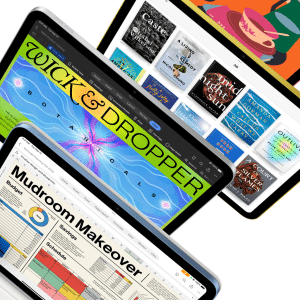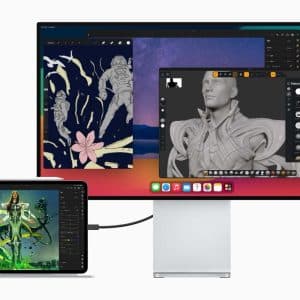 For the first 15 years of her life, Kelly Berta could not communicate with anyone but her parents.
For the first 15 years of her life, Kelly Berta could not communicate with anyone but her parents.
“Since she was a little a baby,” her mother Karen explains, “it was really hard for people to understand her. But she didn’t become frustrated by that. She always tried, and she created her own language. I understood it because she was so consistent.”
But now with the help of a world of applications available through Apple’s iPad, and help from Good Shepherd’s Assistive Technology Program, Berta is able to voice her needs. She can also surf the web, visit educational sites, listen to music, order at restaurants, send e-mails and make full use of her sense of humor.
For Kelly, who lives with both physical and developmental disabilities, the iPad is more than a nifty gadget. It is a window that enables her to share her inner vision with the world in ways that were not available to her before.
“Kelly and Karen have kind of their own language,” says Carrie Kane, speech-language pathologist at Good Shepherd Rehabilitation Hospital about the 24-year-old Allentown woman and her mother. “This gives her a way to say things in a way that everyone can understand.”
Kelly was born with arthrogryposis, a disease that debilitates her muscles. She also has a condition known as apraxia, which affects her speech.
Until recently, Kelly depended on an outdated speech communication device. It was large and difficult to carry and did not offer the versatility that the tablet device provides.
“She is connected to a lot more,” Kane says.
At first Kane wasn’t sure if Kelly would be able to maneuver the device. But after several weeks of using the touch screen and the Proloquo2Go application, Kelly has become adept at combining the large icons to express herself.
She even jokes with Karen, using the icons to tease her every time she feels her mother is losing stamina.
“Mama needs a break,” she says through the iPad’s speakers. “I feel mama tired.”
She likes to play games with her father as well.
“Daddy is in the doghouse,” she likes to tell him whenever she feels like making him laugh.
The device is also programmed with all of her contact and emergency information, which is useful as she becomes more independent and starts interacting with others outside of her comfort zone.
The device can also work in conjunction with GPS, enabling her to detect restaurants in her vicinity and even download the menu to order.
“There is really an app for everything,” Kane explains.
Kane adds that the applications are designed to work in intuitive ways, and makes it possible for the person to update the software regularly. Kane has already taught Karen how to adjust the applications to Kelly’s needs.
“People are drawn to technology in ways that I’ve never seen before,” says Kane, who has been a therapist for 15 years. The iPad’s developers, she adds, did not suspect how useful this technology would become to people with special needs.
With it, Kelly can interact with others at her mom’s choir rehearsals. She can tell them that Barney is her favorite show and that Johann Sebastian Bach is her favorite composer.
Such is the diversity of her preferences and needs. Her parents have opted out of many tests to pinpoint the nature of her cognitive and physical disabilities.
“She is Kelly,” that’s the label that fits her best, her mother says. And with the technology at her finger tips, she can help others to discover what that means.
The Morning Call, Allentown, Pennsylvania
(c)2013 The Morning Call (Allentown, Pa.)







